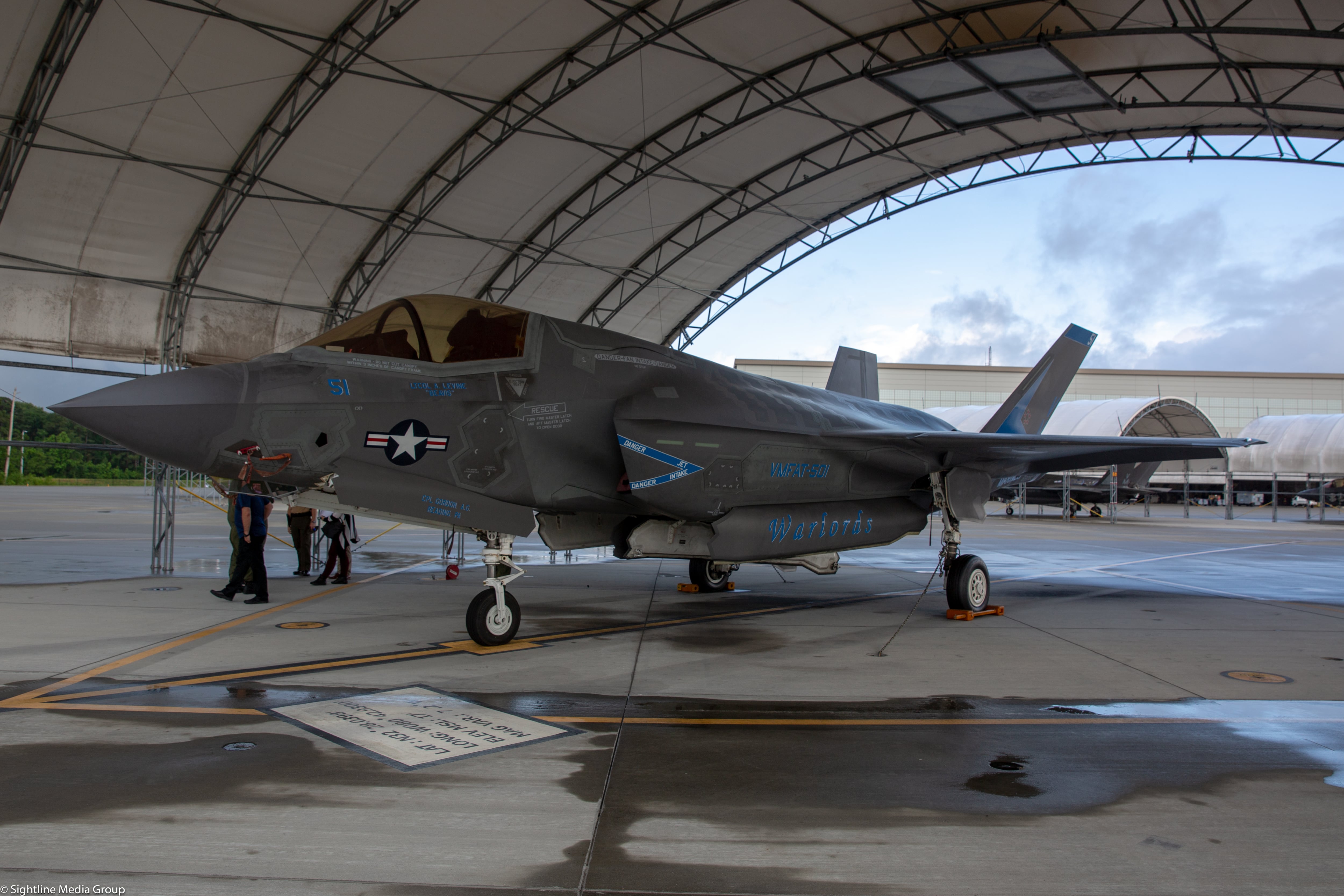WASHINGTON — Raytheon will supply the F-35 joint strike fighter with a new distributed aperture system after the original manufacturer, Northrop Grumman, elected not to participate in a follow on competition, Lockheed Martin announced Wednesday.
The distributed aperture system or DAS is one of the joint strike fighter’s signature capabilities — fusing high-resolution videos from the jet’s six infrared cameras inside the helmet of the pilot and allowing the operator to identify and track targets in both day and night. When news articles talk about how the F-35’s helmet allows the pilot to see through the bottom of the aircraft onto the ground below, that functionality is enabled by the DAS.
The F-35 DAS was originally supplied by Northrop in the form of its AN/AAQ-37 system, but Raytheon will take over the production of the DAS starting with the 15th lot of F-35 aircraft, which will start to be delivered in 2023.
RELATED

Northrop chose not to bid for future DAS production after deciding that it was no longer an attractive business opportunity, said Kathy Warden, the company’s president and chief operating officer, in an April earnings call.
On Wednesday, Northrop spokesman Brian Humphreys elaborated, saying that the company “applied the same disciplined approach we use when considering all business pursuits and concluded that it wasn’t the right business deal for us.”
However, Northrop will continue to be part of the F-35 program in other ways, such as production of the APG-81 radar and sustaining the legacy DAS, he said.
It appears the Raytheon system was able to make a strong showing based, in part, on its affordability.
Lockheed projects that the new Raytheon DAS will cost $3 billion less than Northrop’s over the lifetime of the program, with an estimated 45 percent reduction in the price per unit and a 50 percent cut to sustainment costs.
It will also provide five times the reliability and twice the performance, Lockheed stated in a news release.
“The supply chain competition for the next generation F-35 Distributed Aperture System resulted in significant cost savings, reliability and performance improvements,” Greg Ulmer, Lockheed Martin’s vice president of the F-35 program, said in a statement.
“We are aggressively pursuing cost reduction across the F-35 enterprise and this initiative is a clear demonstration of our unrelenting commitment to reduce costs and deliver transformational capabilities for the warfighter.”
Lowering the hefty cost of sustaining the F-35 has been a top priority for Pentagon acquisition leaders, to include Ellen Lord, the undersecretary of defense for acquisition and sustainment.
“Right now, we can’t afford the sustainment costs we have on the F-35. And we’re committed to changing that,” she told reporters on Jan. 31.
Story edited on 6/13/18 at 11:38 to include Northrop Grumman statement.
Valerie Insinna is Defense News' air warfare reporter. She previously worked the Navy/congressional beats for Defense Daily, which followed almost three years as a staff writer for National Defense Magazine. Prior to that, she worked as an editorial assistant for the Tokyo Shimbun’s Washington bureau.







